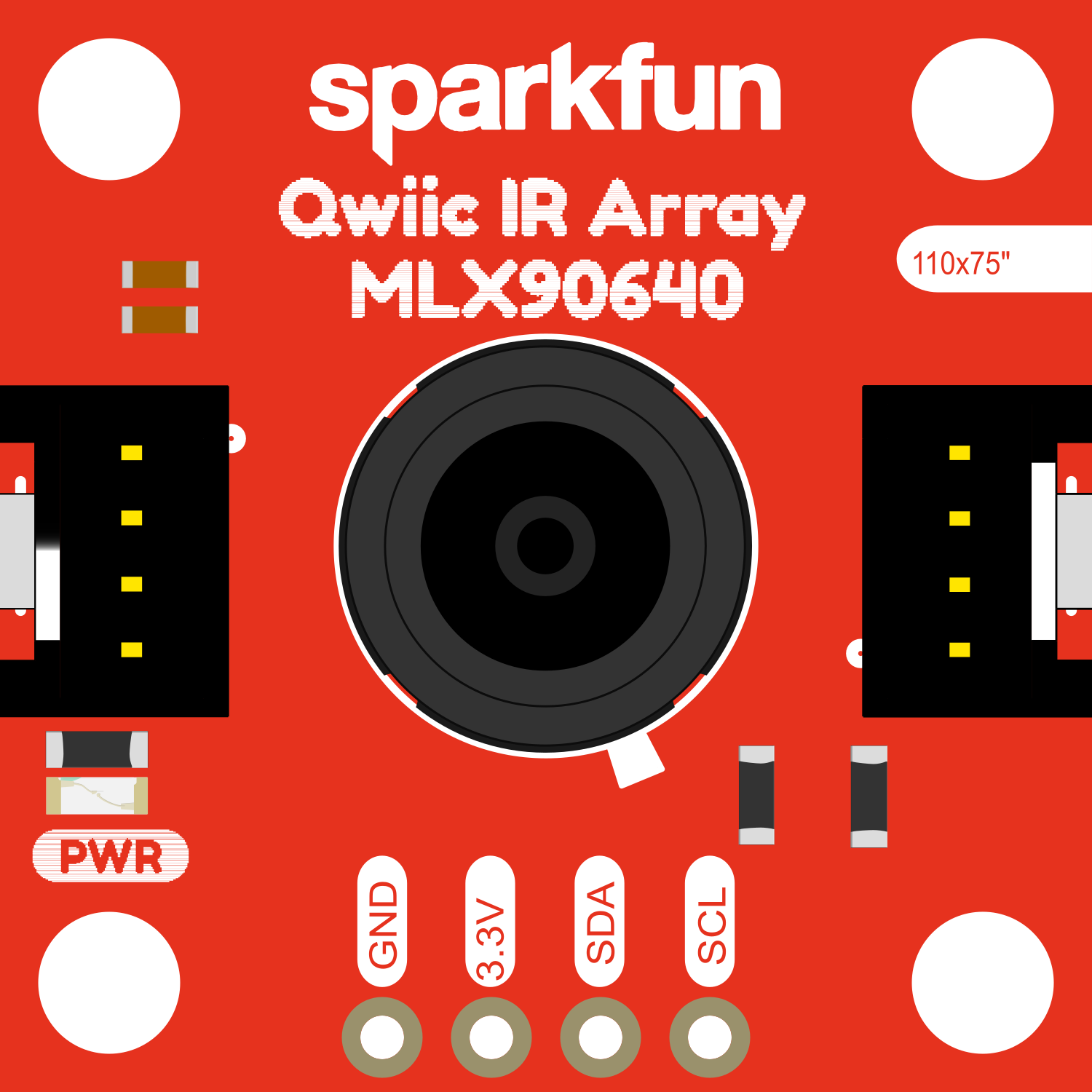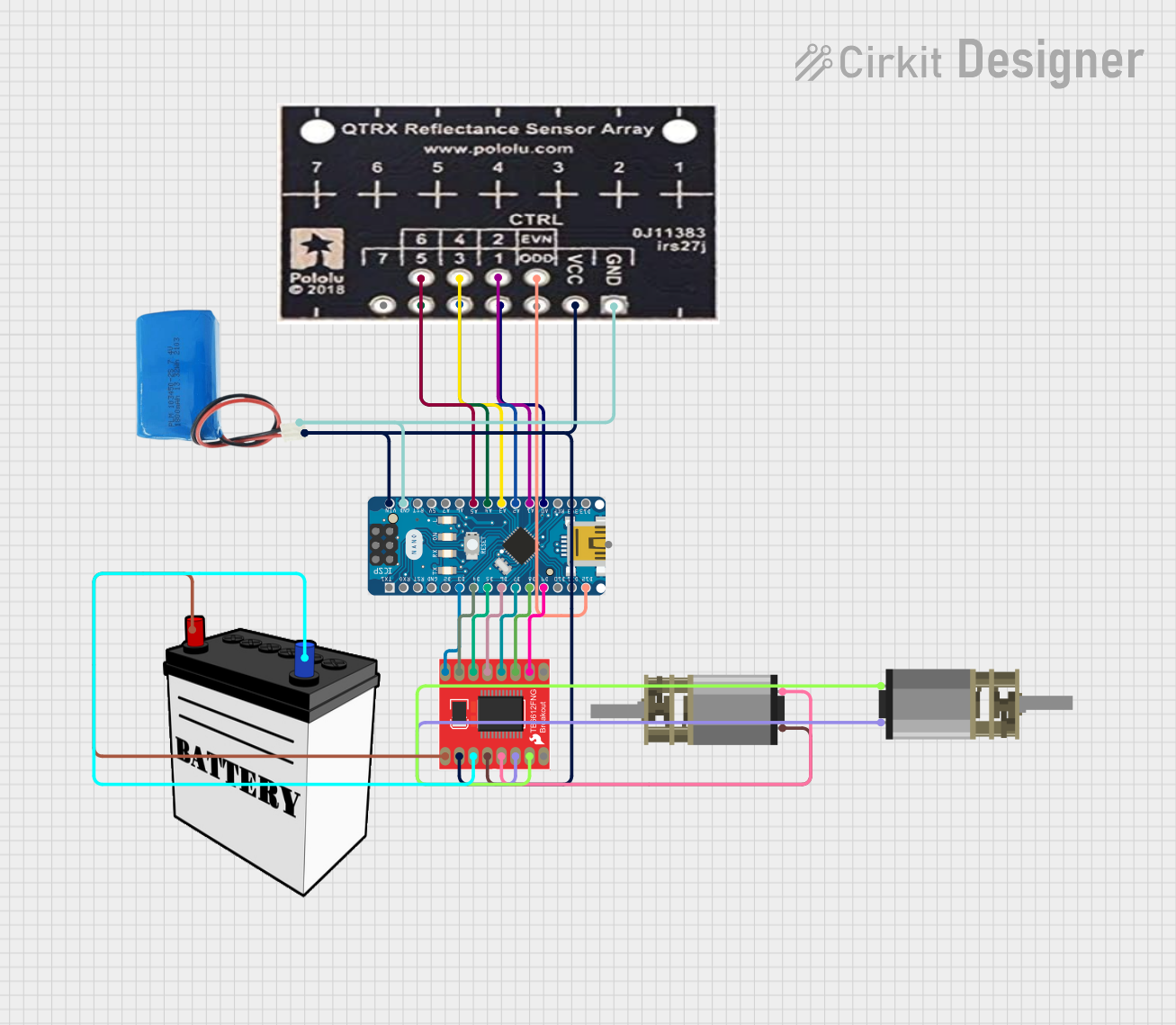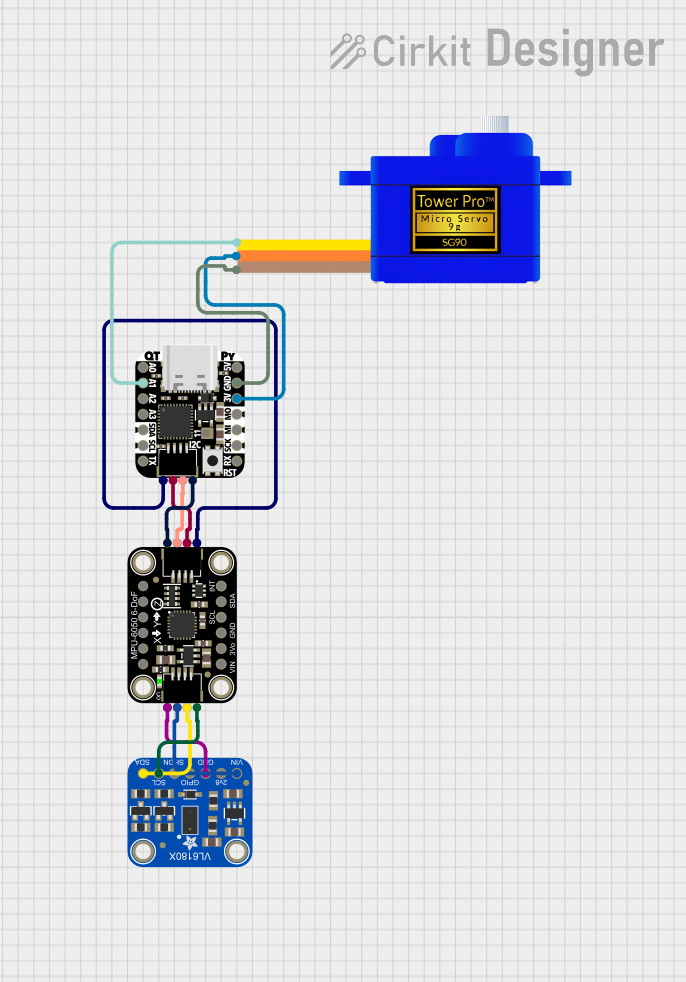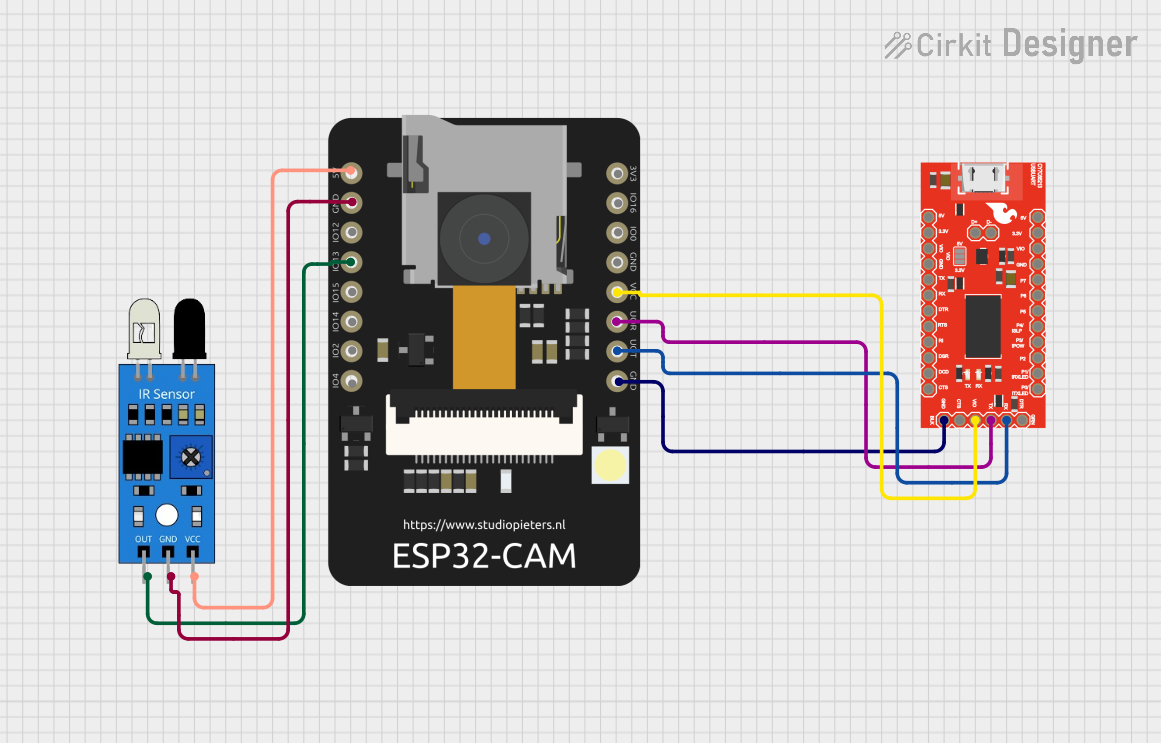
How to Use SparkFun IR Array Breakout - 110 Degree FOV, MLX90640 (Qwiic): Examples, Pinouts, and Specs

 Design with SparkFun IR Array Breakout - 110 Degree FOV, MLX90640 (Qwiic) in Cirkit Designer
Design with SparkFun IR Array Breakout - 110 Degree FOV, MLX90640 (Qwiic) in Cirkit DesignerIntroduction
The SparkFun IR Array Breakout is a sophisticated sensor module designed to capture thermal images using infrared (IR) radiation. It utilizes the MLX90640 sensor to provide a thermal imaging solution with a 110-degree field of view (FOV). This breakout board simplifies the integration of the sensor with various microcontroller platforms, especially those compatible with the Qwiic connect system, which allows for easy daisy-chaining and requires no soldering.
Explore Projects Built with SparkFun IR Array Breakout - 110 Degree FOV, MLX90640 (Qwiic)

 Open Project in Cirkit Designer
Open Project in Cirkit Designer
 Open Project in Cirkit Designer
Open Project in Cirkit Designer
 Open Project in Cirkit Designer
Open Project in Cirkit Designer
 Open Project in Cirkit Designer
Open Project in Cirkit DesignerExplore Projects Built with SparkFun IR Array Breakout - 110 Degree FOV, MLX90640 (Qwiic)

 Open Project in Cirkit Designer
Open Project in Cirkit Designer
 Open Project in Cirkit Designer
Open Project in Cirkit Designer
 Open Project in Cirkit Designer
Open Project in Cirkit Designer
 Open Project in Cirkit Designer
Open Project in Cirkit DesignerCommon Applications and Use Cases
- Human presence detection
- Temperature measurement across a scene
- Thermal imaging for security systems
- Environmental monitoring
- Energy conservation systems
- Industrial temperature monitoring of machinery
Technical Specifications
Key Technical Details
- Sensor: MLX90640
- Interface: I2C (Qwiic compatible)
- Field of View (FOV): 110 degrees
- Resolution: 32x24 pixels
- Measurement Range: -40°C to 300°C
- Refresh Rate: 0.5Hz to 64Hz
- Supply Voltage: 3V to 3.6V
- Current Consumption: 23mA (typical)
Pin Configuration and Descriptions
| Pin Name | Description |
|---|---|
| GND | Ground connection |
| VCC | Power supply (3V to 3.6V) |
| SDA | I2C data line |
| SCL | I2C clock line |
| INT | Interrupt pin (optional use) |
Usage Instructions
How to Use the Component in a Circuit
- Power Connections: Connect the VCC pin to a 3.3V source and the GND pin to the ground on your microcontroller board.
- I2C Connections: Connect the SDA and SCL pins to the corresponding I2C data and clock lines on your microcontroller.
- Qwiic Connection: If using a Qwiic-enabled board, simply connect the Qwiic cable from the breakout board to the microcontroller's Qwiic connector.
Important Considerations and Best Practices
- Ensure that the power supply is within the specified voltage range to prevent damage.
- Use pull-up resistors on the I2C lines if they are not already present on your microcontroller board.
- Avoid physical obstructions in front of the sensor that could block the IR radiation.
- For accurate temperature readings, calibrate the sensor for the specific application environment.
Example Code for Arduino UNO
#include <Wire.h>
#include <Adafruit_MLX90640.h>
Adafruit_MLX90640 mlx;
void setup() {
Serial.begin(9600);
while (!Serial) delay(10); // wait for serial port to connect
Serial.println("MLX90640 IR Array Example");
// Initialize the MLX90640 sensor
if (!mlx.begin()) {
Serial.println("Failed to initialize MLX90640!");
while (1) delay(10);
}
// Set the refresh rate to 2Hz
mlx.setRefreshRate(MLX90640_REFRESH_2_HZ);
}
void loop() {
float mlx90640Frame[32 * 24]; // buffer for full frame of temperatures
// Capture an image frame
if (mlx.getFrame(mlx90640Frame)) {
for (int i = 0; i < 32 * 24; i++) {
Serial.print(mlx90640Frame[i]);
Serial.print(",");
if ((i + 1) % 32 == 0) {
Serial.println();
}
}
Serial.println();
} else {
Serial.println("Failed to read frame");
}
delay(500); // Delay between frames
}
Troubleshooting and FAQs
Common Issues Users Might Face
- No Data on Serial Monitor: Ensure that the SDA and SCL connections are secure and that the correct I2C address is being used.
- Inaccurate Temperature Readings: Calibrate the sensor for the environment where it is being used. Also, check for any objects that might be blocking the sensor's FOV.
- Sensor Not Detected: Verify that the power supply is within the specified range and that the I2C lines are properly connected with pull-up resistors.
Solutions and Tips for Troubleshooting
- Double-check wiring connections and ensure that the microcontroller is supplying 3.3V to the VCC pin.
- Use the I2C scanner sketch to confirm that the sensor is detected on the I2C bus.
- If using long cables for I2C connection, consider using shielded cables to prevent noise.
FAQs
Q: Can the MLX90640 sensor be used outdoors? A: Yes, but it should be protected from direct sunlight and harsh weather conditions to maintain accuracy.
Q: What is the maximum I2C bus length for the sensor? A: It is recommended to keep the I2C bus length as short as possible, ideally less than 1 meter, to ensure reliable communication.
Q: Can the sensor detect through glass or other materials? A: No, the MLX90640 cannot detect IR radiation through glass or similar materials as they block IR wavelengths.
Q: How do I change the I2C address of the sensor? A: The I2C address of the MLX90640 sensor is fixed and cannot be changed. If you need to use multiple sensors, you will need an I2C multiplexer.
Q: Is it possible to change the refresh rate of the sensor?
A: Yes, the refresh rate can be adjusted using the mlx.setRefreshRate() function in the provided library.